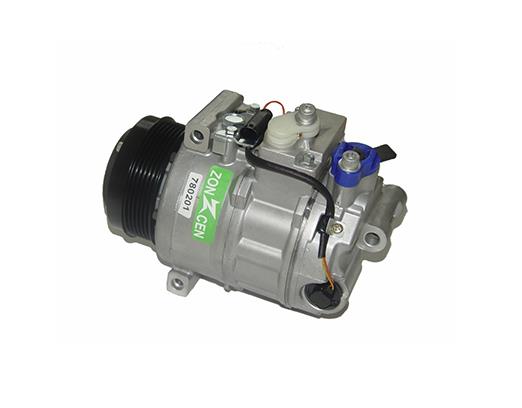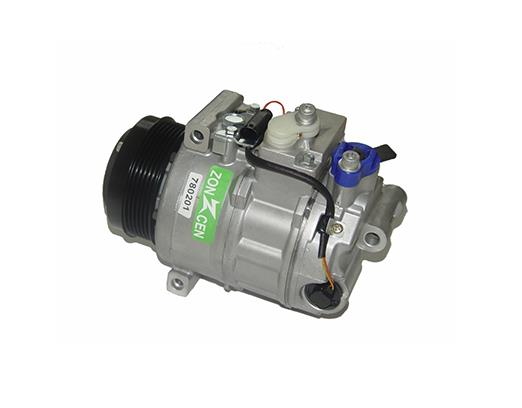
Precautions for the Installation of Automobile Air-Conditioning Compressors
Ensure smooth and efficient automobile air-conditioning compressor installation with expert tips. Learn about selecting the right compressor, proper lubrication, refrigerant handling, and system testing for optimal performance and passenger comfort.
ZHONGCHENG
Installing an automobile air-conditioning compressor is a crucial aspect of ensuring optimal performance and comfort within a vehicle's cabin. The compressor plays a pivotal role in the air-conditioning system, responsible for pressurizing and circulating the refrigerant that cools the air. Proper installation is essential for longevity, efficiency, and safety. In this comprehensive guide, we will delve into the various precautions necessary for the installation of automobile air-conditioning compressors.
Understanding Automobile Air-Conditioning Compressors
Before delving into installation precautions, it's imperative to grasp the fundamentals of automobile air-conditioning compressors. These devices are integral components of the vehicle's HVAC (Heating, Ventilation, and Air Conditioning) system, responsible for compressing refrigerant gas and circulating it through the system. By compressing the refrigerant, the compressor increases its temperature and pressure, facilitating the transfer of heat from the cabin to the outside environment.
Selecting the Right Compressor
The first step in ensuring a successful installation is selecting the appropriate compressor for the vehicle's make and model. Compatibility is paramount, as using an incompatible compressor can lead to inefficient operation, premature failure, and potential safety hazards. Consult the vehicle manufacturer's specifications or seek guidance from reputable automotive experts to determine the correct compressor for the application.

Inspecting the Compressor
Before installation, thoroughly inspect the automobile air-conditioning compressor for any signs of damage or defects. Check for leaks, cracks, or abnormalities in the housing, fittings, and mounting points. Additionally, verify that all electrical connectors and terminals are intact and free from corrosion. Any compromised components should be replaced promptly to prevent performance issues and potential system failure.
Ensuring Proper Lubrication
Proper lubrication is essential for the smooth and efficient operation of automobile air-conditioning compressors. Before installation, ensure that the compressor is adequately lubricated according to the manufacturer's recommendations. Use high-quality refrigerant oil compatible with the compressor and refrigerant type to minimize friction and wear. Insufficient lubrication can result in compressor failure and costly repairs.
Mounting the Compressor Securely
Secure mounting of the automobile air-conditioning compressor is crucial to prevent excessive vibration, noise, and premature wear. Ensure that the mounting brackets and hardware are appropriate for the compressor and vehicle model. Follow the manufacturer's specifications and guidelines for proper mounting orientation and torque settings. Additionally, consider using vibration-damping pads or isolators to reduce noise and prolong the compressor's lifespan.
Proper Refrigerant Handling
When installing an automobile air-conditioning compressor, it's imperative to handle refrigerant properly to ensure safety and environmental compliance. Avoid releasing refrigerant into the atmosphere, as it contributes to ozone depletion and global warming. Use equipment designed for refrigerant recovery and recycling to capture and recycle any discharged refrigerant. Additionally, wear appropriate personal protective equipment, such as gloves and safety goggles, when handling refrigerant to prevent skin contact and eye irritation.
Securing Refrigerant Lines and Fittings
Proper installation of refrigerant lines and fittings is critical to prevent leaks and ensure efficient operation of the air-conditioning system. Use high-quality hoses and fittings rated for automotive HVAC applications, and ensure proper sizing and routing to minimize pressure drop and refrigerant loss. Tighten fittings to the manufacturer's specifications using calibrated torque wrenches to prevent over-tightening or under-tightening, which can lead to leaks and system failure.
Performing System Flushing and Evacuation
Before charging the air-conditioning system with refrigerant, it's essential to flush the system thoroughly to remove any contaminants, moisture, or debris that could compromise performance and reliability. Use a suitable flushing agent and follow the manufacturer's recommendations for flushing procedures and equipment. After flushing, evacuate the system using a vacuum pump to remove air and moisture, ensuring proper refrigerant flow and system efficiency.
Conducting Performance Testing
Once the automobile air-conditioning compressor is installed and the system is charged with refrigerant, it's vital to conduct comprehensive performance testing to verify proper operation and identify any potential issues. Monitor system pressures, temperatures, and airflow using diagnostic tools such as manifold gauges and thermometers. Check for proper cooling performance at various operating conditions, including idle, cruising, and maximum load. Address any anomalies promptly to prevent further damage and ensure passenger comfort.
Regular Maintenance and Inspection
Finally, ongoing maintenance and inspection are essential to ensure the continued reliability and efficiency of the automobile air-conditioning compressor. Follow the vehicle manufacturer's recommended service intervals for inspecting and servicing the air-conditioning system, including compressor oil and refrigerant replenishment, filter replacement, and component inspection. Address any abnormalities or performance issues promptly to prevent costly repairs and downtime.
In conclusion, the installation of automobile air-conditioning compressors requires careful attention to detail and adherence to proper procedures and precautions. By selecting the right compressor, ensuring proper lubrication, mounting, refrigerant handling, and system testing, vehicle owners and technicians can optimize performance, longevity, and passenger comfort. Regular maintenance and inspection further contribute to the reliable operation of the air-conditioning system, ensuring a pleasant driving experience regardless of external conditions.
-
What should be paid attention to when using automobile air-conditioning compressor
 2021-04-20
2021-04-20
-
Will damage to the car air conditioner compressor cause abnormal sound
 2021-04-19
2021-04-19
-
Do car air conditioner compressors need to be lubricated
 2021-04-19
2021-04-19






